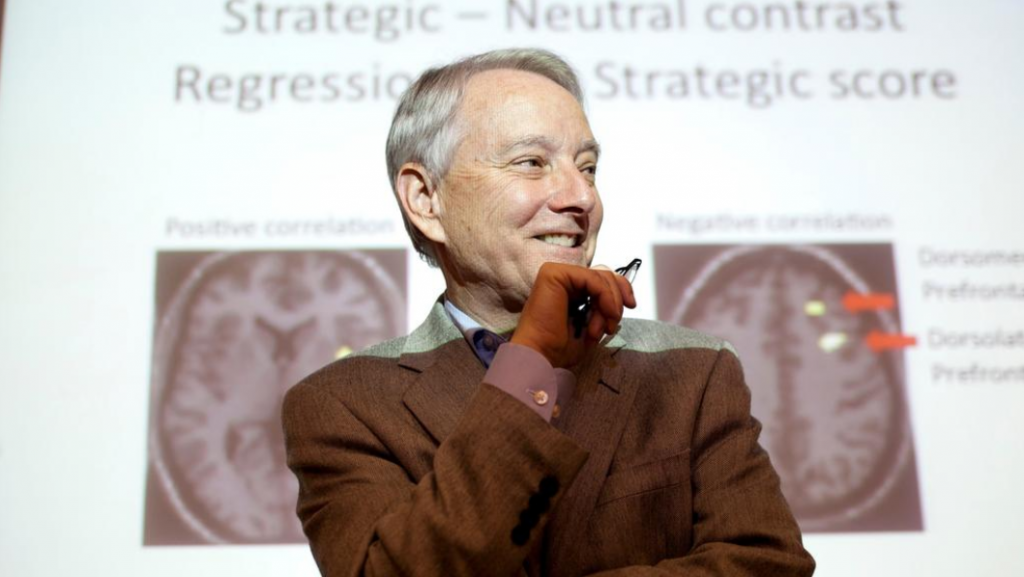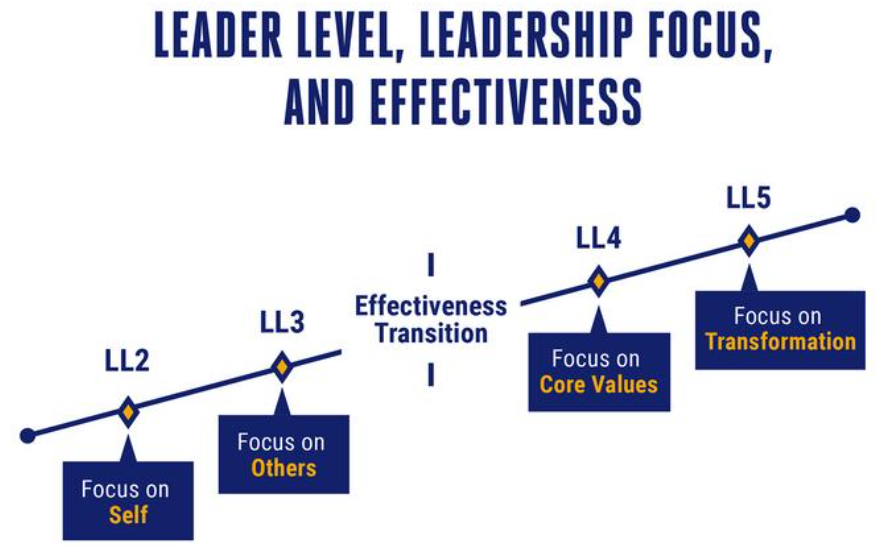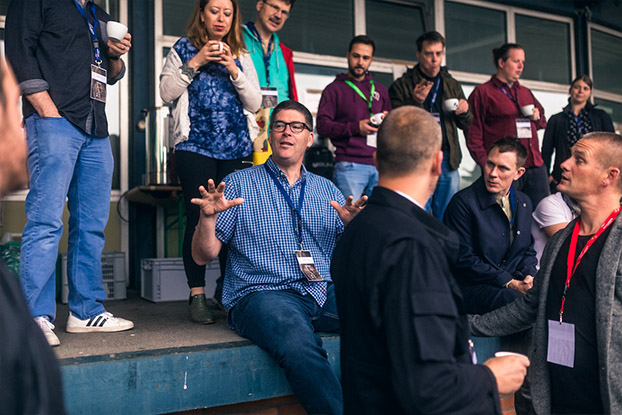“Leadership skills are complicated, multifaceted, and necessary. In today’s global economy, where technological and other changes happen rapidly, businesses need effective leaders who are able to continually grow, learn, and adapt. They need leaders who are creative and capable of thinking and acting entrepreneurially. Leaders must be able to manage people, manage change, and, when necessary, manage crises—sometimes all at once.”
– Erika H. James, Dean of Emory University’s Goizueta Business School
Many of today’s business challenges are fluid, but goal one remains constant – grow the business. The pace of business is constantly accelerating. Circumstances, context and competitors are changing, and the best solutions to grow the business are often unclear and uncertain.
Environmental issues. Social issues. Geopolitical issues. Competitive issues.
These are just a few of the challenges that today’s business leaders face. But no individual leader or single organization can solve any of these problems with yesterday’s tools and leadership styles and skills.
“It feels like, as executives, we’re in over our heads because things are so complex, so challenging. The problems that we all face are wicked,” said Karl Kuhnert, a professor in the practice of organization and management at Goizueta Business School at Emory University.
Business leaders can no longer rely solely on their technical skills because not every problem can be fixed with a technical solution. They must develop new ways to shape strategies, solve problems and seize opportunities. “As complexity accelerates, organizations don’t have people with all the answers,” said Rick Gilkey, a professor in the practice of organization and management at Goizueta.
As faculty members at Goizueta, Gilkey and Kuhnert challenge executives to learn to lead in a way that facilitates responding to the demands of the marketplace while simultaneously influencing what that marketplace looks like.
Leading today
“You build the enterprise around people,” Gilkey said. “It used to be that leaders thought they inherited a culture. Now, leaders know they are responsible for creating a culture where people can achieve. It’s about human capital.”
“Human capital” is the epicenter of the concept of new growth. Business leaders view knowledge as an asset whose value can be increased by creating a culture of innovation, engagement and nurturing ideas from across the organization. Investing in people increases the value of their knowledge, according to Gilkey.

“Leaders need to have a deeper sense of the value they impart and what other people are imparting as well,” Gilkey said. “This isn’t a command-and-control performance. It’s about creating an environment for other people to be successful.” So Gilkey and Kuhnert focus on helping business leaders and their organizations create and capture new growth by facilitating personal and organizational change.
Today’s leaders must continue to grow personally to succeed organizationally. They need to adopt a personal growth mindset where challenges and failures are viewed as opportunities to learn and improve. “Leadership is about your ability to grow to understand problems that are more dynamic and more complex,” said Kuhnert. “Successful leaders come to see things more broadly and to view problems in a more holistic way. This is adaptive learning.”
Learning to lead
Both Kuhnert and Gilkey say they strive to identify what makes successful leaders successful – and what distinguishes experienced, effective leaders.

Kuhnert has researched how executives view adaptive problems differently as they mature as leaders. “They don’t solve the significant problems we face. They outgrow them,” he said.
“I’m helping people outgrow the problems they’re currently facing through models of adult development. When they realize there is a better way to handle the problem than the approach they have been using, that reflects their maturity as a leader.”
In his recent book, The Map, Kuhnert and co-author Keith Eigel outline five levels of development that define the maturity and capability of a leader. The following leadership development levels (LDLs) are based on the work of Robert Kegan, formerly the Meehan Professor in Adult Learning and Professional Development at Harvard Graduate School of Education. The levels serve as a framework to understand someone’s leadership maturity — and subsequently the rationale for their decision making:
Mature leaders, those at levels 4 and 5, who are more altruistic and more empathic, make the effort to create “brain-friendly environments” where employees can thrive. “They create a culture where people go into work excited to get there, they find meaning and purpose in what they do there, and then when they get home, they want to talk about it instead of to forget about it,” Gilkey said.

Gilkey has focused his work using neuroimaging techniques, such as functional magnetic resonance imaging (fMRI), and his work as a consulting psychologist and psychotherapist, to understand how leaders leverage their personal maturity to build work environments that optimize their organization’s most valuable asset: its people.
Gilkey says his research has found that the best leaders engage their emotions during strategic thinking, moral reasoning and creative problem solving. His research included using MRI scans to see what executives’ brains look like during these tasks.
Gilkey’s research also found that Level 4 and 5 executives make ethical decisions first through emotions. Thus, when they encounter a moral problem, for example, their emotions tend to outweigh their rational thinking initially.
He said there are two kinds of moral reasoning: rule-based and care-based. For example, a leader who uses care-based reasoning will be more willing to support a top employee who comes in late but works late, say due to caregiving responsibilities, rather than reprimanding them for always being tardy, as a rule-based leader would.
Gilkey says his research indicates that executives who actively develop their emotional maturity and who understand how to leverage emotions in their decision making may be more effective in the workplace. Custom business training programs like those offered at Goizueta can help aspiring leaders to accelerate their own maturation and professional growth.
What makes mature, effective leaders different
Effective leaders see the world differently because they are different. These are five ways through which effective leaders differentiate themselves, according to Gilkey.
- How they think. The most strategic leaders are also the best at coming up with new tactics and approaches because they are able to see hidden connections that others may miss. Either/or thinking has been replaced by both/and thinking.
- How they learn. Effective leaders are always looking for new sources of information, are naturally curious, and gain insights from unconventional sources. They also continuously seek to disconfirm information, disagree in a productive way, and identify patterns and opportunities, particularly in adversity or scarcity.
- How they manage their emotions and leverage their emotional quotient (EQ). Effective leaders build a culture of emotional safety, optimism, commitment and performance.
- How they operate. Effective leaders sometimes behave in ways that could be construed as counterintuitive or even inconsistent. In volatile situations they are calm; when answers are needed, they focus on questions; they can be both reverential and irreverent, narcissistic (in a mature sense) and altruistic; they operate effectively within hierarchies but are not defined by them, they can be both forceful and receptive, controlling and empowering, and they marshal all these forces in response to the best interest of the people and organizations they serve.
- How they manage their behavior. Having an executive presence means being approachable, open to feedback, positive and resilient.
Leading in the future
Future leaders who want to add value and succeed in a high-velocity business environment must approach learning in a multidisciplinary, holistic way. Experiential learning is critical for executives, Gilkey said. “We know from studying brain development that you learn from experiences that are different from yours. It forces learning, growth and development.”
In its leadership coaching program, for example, Goizueta synthesizes multiple disciplines ranging from neurology to Buddhist psychology and family systems theory to help organizations develop their leaders and find their competitive edge. That reflective and emotionally mature approach will be the way for tomorrow’s leaders.
Problems are becoming too complex for people to solve alone. Leaders must be willing to give up the right to be right, and to consider conflicting viewpoints, Kuhnert said. “You have to figure out a way to meet people where they are, and hopefully they’ll meet you where you are, and you can solve problems together.”
If you’d like to learn how you or your organization can engage with Goizueta faculty on this topic, speak with a learning advisor at 404-727-2200 or visit our website.
Emory University’s Goizueta Business School was created in 1919 as one of the nation’s first business schools. Its degree and Executive Education programs consistently rank in the top 25 in the world among major publications including Businessweek, The Economist, U.S. News & World Report, Financial Times, and Forbes.











